Ties That Bind
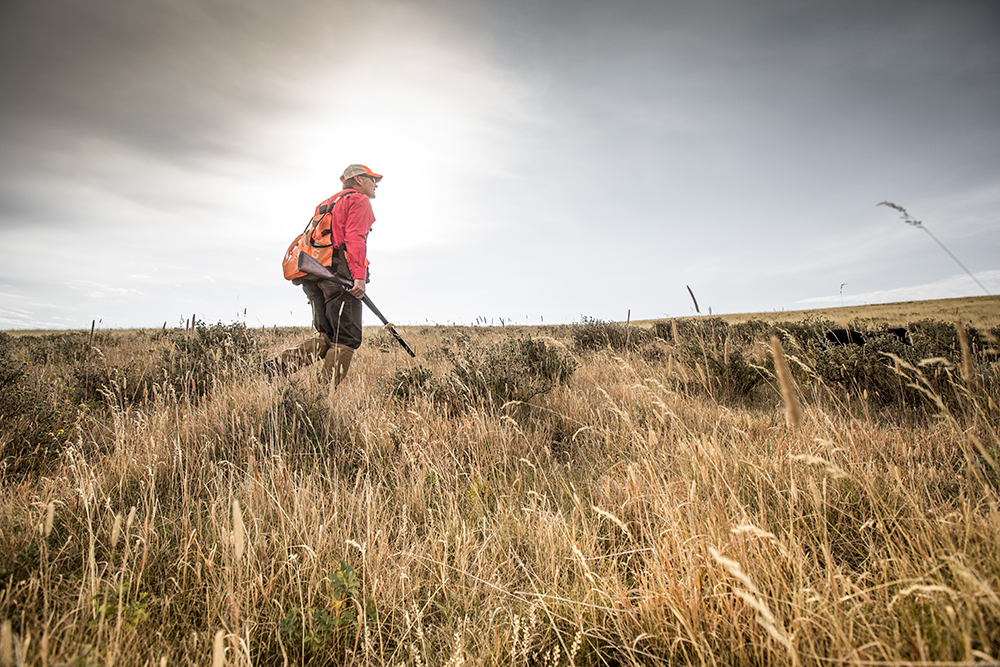
For nearly a decade, Simon Perkins followed pointing dogs while guiding hunters over the prairies east of Great Falls, Montana. It was an occupation motivated by something quite personal: leading wingshooters into the finest wild-bird cover south of the Canadian border. His boot prints etched the ground with a sense of purpose, which was passed down to him through a lineage of hunters. Simon would at length return to his native Vermont and the family business centered there, The Orvis Company; his hours spent chasing dogs and gamebirds would become less frequent but no less necessary. That identity, reinforced on the Montana prairies, inform both a life and a livelihood.
In the late autumn of 2014, Simon’s wife Els ventured back to Montana for reasons of her own. Seven months pregnant with her first child, Els headed west to chase the progeny of birds and dogs that Simon had pursued through his guiding years. The trip was to serve as a baptism of sorts for a baby who wasn’t quite ready yet. Nestled in Els’ belly was a spirit informed by motion, the rise and fall of Els’ footsteps over land, all communicated without words. You might say that little Pippa (who is now nearing two) began bird hunting well before she was born. You also might say that grouse breasts wrapped in bacon made her strong, and generations of upland hunters plotted her course. Els carried Pippa over the prairie and shot sharptails and Huns, and referenced impending motherhood against an endless section of grassland and a bottomless expanse of sky.
Wonderfully, the shared story of Simon, Els, and Pippa serves as a continuation of a family legacy. On the wall of The Orvis Company’s corporate office is a grainy photo of Simon’s paternal grandfather, Leigh H. Perkins Sr., known deferentially as LHP. In the photo, a two-year-old LHP is standing beneath a pair of hanging 12-foot alligators. The story goes that the gators were dispatched by LHP’s then-pregnant mother, Katherine Haskell Perkins. As LHP tells it, his earliest memories are of paddling the Georgia swamps as an apt pupil with his mother, who plugged gators from a tippy pirogue. “I was the decoy,” says LHP.
There’s an arc here, a tie that binds the Perkins family across generations. Young LHP, having survived the Georgia swamps, went on to purchase Vermont’s The Orvis Company, America’s oldest hunting and fly-fishing mail-order outfitter. Building on a passion for the outdoors that blossomed during his own childhood, Leigh nurtured a family, and a family business, that are compelled by a similar enthusiasm. From turkeys to trout to timberdoodles, the Perkins clan has amassed a remarkable chronicle of sporting experience.
Pushing ninety, LHP still manages well more than 200 days afield each year; his sons, Dave and Perk, and grandsons Simon and Charley, are nearly as avid, though Orvis office hours command most of their time. Even young Pippa has been privy to covey rises and strutting toms, and houses full of hunting dogs. These collected days afield have enlightened a company that has come to define a sporting tradition. At the core of the Orvis brand is a family as pleasantly at home in the sparest Vermont grouse woods as on the grouse moors of Scotland, bound by a love for the outdoors.

In the Beginning
A hundred years before Pippa’s natal autumn, her paternal great-great grandmother, Katherine Haskell, shot her first bobwhite. The Haskells had come south with a group of Clevelanders, finding a welcoming climate in the vicinity of Thomasville, Georgia. Seeing a spunky athleticism in the girl, a family friend took her along on a duck hunt, allowing her to let fly at the migrating puddlers. Katherine was smitten with wingshooting. What followed is a legacy that permeates a family and pervades a consumer brand, as resonant today as it was a century ago.
Katherine’s aptitude for the sport was irrefutable. With access to skilled hunters, fine dogs, and the golden era of Southeastern quail shooting, Katherine Haskell (later Perkins) became a known phenomenon beneath the pines. The formidable Nash Buckingham, writing of Katherine Haskell Perkins in 1958, allowed, “I saw in Mrs. Perkins a quail shot who needn’t ask odds of any quail shot either man or woman.” Such praise would be the envy of a generation of hunters, but praise was not the ambition of Mrs. Perkins. It was days afield, dogs, and covey rises she was after, and her motivations would remain true until her death in 1983.
Notwithstanding his efficacy as a decoy, Katherine’s eldest child, LHP, also became her foremost chum. Through the seasons, LHP absorbed the sporting life. He rode a mule wagon through the quail courses until he could ride a horse of his own, and he watched his mother shoot birds that buzzed like angry bees. He witnessed the reverence with which she handled dogs, counted coveys, and gave names to the birds that sang. During LHP’s boyhood, hunting was as essential as oxygen. His mother wished for him a career in the environs that they both loved, training dogs and catching fish and shooting birds. His father, however, recommended a more traditional path. “Most men I know who are happy work for a living,” said LHP’s father. “The few who don’t are intellectuals.” And then, as an afterthought: “Son, you’re not an intellectual. You better find some work you’d like to do.”
In the ensuing years, LHP combined the advice of both parents. He was expelled from one school for “luring the more promising students off fishing,” and nearly dismissed from a second for skinning a skunk in the storage room beneath the dining hall. He ran a trap line while his schoolmates slept, and doused worms against the cut banks while they chased fly balls and grounders. In the end, he wound up at Williams College in Massachusetts, where his finest days were spent in the company of Leda, a female Brittany. With a dog and a gun and the Northeast forests beckoning, LHP found college not altogether a bad enterprise; in turn it laid the foundation for a career.
Following college, LHP pursued work in mining, spending nearly a decade in the Upper Midwest. During these years he married and started a family, and hunted of course. Prodded by a desire for a business on which to make his mark, LHP traveled extensively, finally purchasing The Orvis Company in Manchester, Vermont, in 1965. With the acquisition, he became owner and primary salesman of the world’s oldest mail-order catalog company. The business appealed to LHP’s passions, with a focus on fly-fishing tackle and a longstanding culture that espoused the sporting lifestyle. He grew Orvis in depth and breadth, adding clothing, guns, and sporting gifts to the assortment. What’s more, he pioneered the trading of customer mailing lists among competitors, thereby building a consumer base exponentially, and gaining a dominant foothold in the sporting retail and catalog space.
Through it all, LHP hunted birds; he became the company’s foremost field tester and implemented a code of corporate responsibility based on a commitment to natural resources. More than one company rental car was returned festooned with spent shells and feathers, so much so that certain rental car companies still deny reservations made with an Orvis corporate credit card. But such was LHP’s passion, and commitment to a way of life; his example and drive indoctrinated a company, living on in two sons, who were soon to enter the family business.
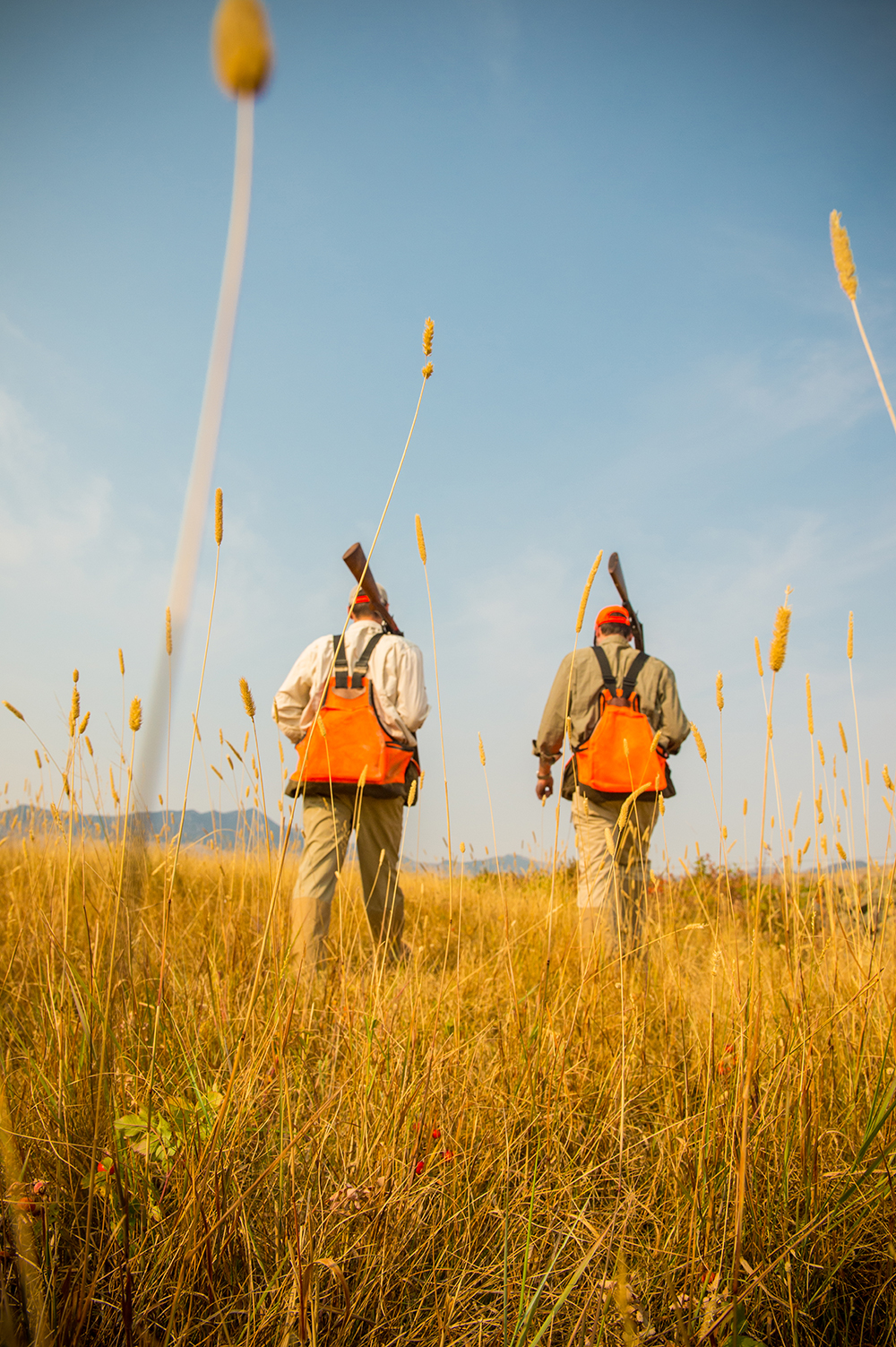
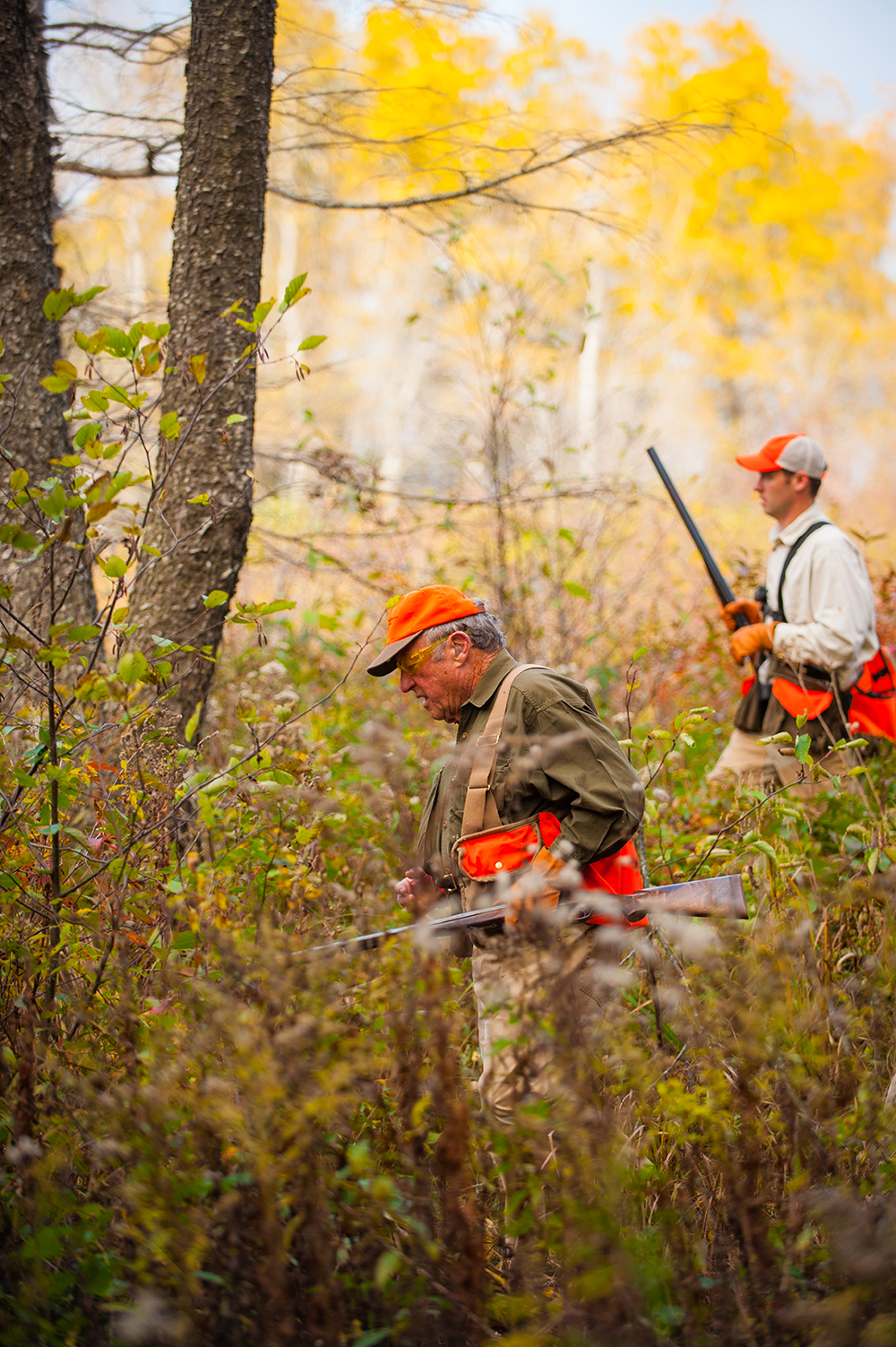
The Brothers Perkins
Brothers Dave and Perk (Leigh Jr.) Perkins, who respectively serve as Executive Vice Chairman and CEO of The Orvis Company, work side-by-side in offices on the third floor of Orvis headquarters in Sunderland, Vermont. Their father’s office is adjacent. Their windows overlook the Green Mountains to the south, and the swell of the Taconics to the west. For years, Dave and Perk, and their father too, lived in neighboring homes on a meadow stretch of the nearby Battenkill, the famous trout stream. A stone’s throw from their dooryards, brown trout slurped Hendrickson mayflies each May, and woodcock tumbled into the birch whips and osiers each October. Passing one another on the way to meetings, the brothers compare notes about the morel mushroom harvest and the prevalence of ducks, and the potential for a second hatch of sharptail grouse on their beloved Western prairies.
Dave and Perk got an early education in nature’s classroom. Over the span of a half century, the brothers have witnessed a collective thousands of points and flushes, which have rounded out lives defined in the uplands. What pervades the Perkins family, however, is an appreciation for quality over quantity, and a belief in the single bird well pointed or heroically retrieved. When asked how they did on a given day, both Dave and Perk will describe a moment wherein a friend’s success, an epic walk, or the work of a young dog took center stage, and nothing else was as important, or anywhere near as lovely.
Their start in hunting was imbued with the same ethos that their grandmother adopted years before, one that they too have passed along. From the time they could keep up, they followed a parent whose enthusiasm was complete and unadulterated. Dave’s assessment of the process is apt: “As little kids, we watched our dad for so long before we were big enough to take part that by the time we were welcome to join, we weren’t about to miss it. Looking back, I remember the times I got left behind more than the times I got to go, and I wasn’t about to get left behind too often!”
Dave and Perk grew up largely between Ohio and Vermont. At their father’s side, they learned to tie flies and build twig fires, to move deftly past a dog on point, and to instinctively swing, mount, and shoot a shotgun. They were taught that these skills were of universal value, if only for the joy they brought. To hear them tell it, this connection was not forced on them, but simply made available.
“I don’t ever remember being offered Cub Scouts or Boy Scouts . . . no one was ever going to drive me to Little League,” says Dave of his childhood. “But there was always an open invitation to tromp around through a wet freezing day in Ravenna, Ohio, following Dad.”
Despite the demands of work and family, Perk and Dave, like their father, remain devoted and active wingshooters. Perk describes the early years when, as young men, he and Dave returned to Manchester, Vermont, to work beside their father. “It was just a given,” Perk says, as he stands in the field behind the Orvis corporate office, watching his young pointer pup stalk grasshoppers. “Every weekend morning from the opener until deer season, we showed up in Dad’s driveway just after dawn. There was no question . . . we were there rain or shine. The only conversation was which direction we’d head off in; among the three of us, we had grouse and woodcock coverts all over the southern part of the state.”
Dave remembers those days too, and similar ones that came earlier. “We hunted ducks and quail as kids,” he says. “But in the grouse woods there was so much more involved: you had to learn to read dogs and cover, to know habitat, to be able to move through the brush and get up to a point, and only then could you possibly get a shot. You measured your day in a bird or two, and two was a heroic day. But the passion came from doing all those things yourself.”
Despite the fact that they have been afforded a rich and varied inheritance in hunting, the Perkins men return most often to their own backyards, busting the brush for the promise of a single bird. They run dogs that were born in their homes, dogs that share their beds. Their boots are muddy and their vests are faded, and their brier pants are frayed around the cuffs. To see Dave and Perk in the field is to witness two men comfortable in the knowledge that a passion for bird hunting and all of its trappings continues to mature along with them, without becoming stale.
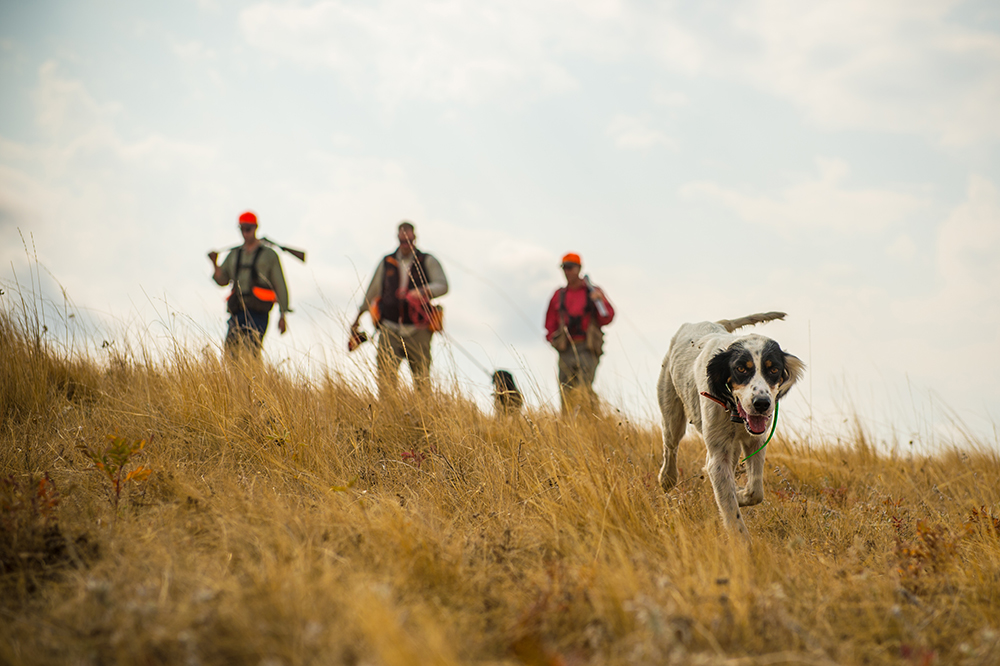
The Next Generation: Simon and Charley
Perhaps what makes the Perkins family unique, and by their own admission so fortunate, is a willingness to let the next generation take what it will, and perpetuate it in the direction they will, without condition.
Over a dinner of blood-rare Arkansas mallards, Perk’s sons Simon and Charley reflect on their family, and the ties that bind the family to a sporting life. Both see the real gift as something more than shooting opportunities. Simon leans back in his chair and says it best: “Growing up in a family that is so obsessed about hunting, probably what we take for granted most is that we were never forced to do any of it. We were simply allowed to connect with it on our own terms, encouraged by a family who connected with it intimately and honestly.”
Simon, in his early thirties, came to the family company after more than a decade guiding bird hunters and fly anglers in Montana. Going on four years at Orvis full time, he is currently Director of Brand Marketing, having formerly overseen the hunting businesses including the Orvis Endorsement program and the shooting grounds at Orvis Sandanona in New York and Pursell Farms in Alabama.
Charley, who is three years Simon’s junior and is no stranger to the guiding world either, came home to Vermont after several years with a Boston advertising firm. He is Manager of Wingshooting Merchandise.
The brothers possess an exuberance and embody an eagerness to break new ground, propelling The Orvis Company forward. They recount a childhood uncannily similar to what their father and uncle describe of their own. However, they are emphatic that family has always been at the center, and hunting, though essential, was a vehicle for being together in the outdoors.
“We didn’t think of going down to Grandpa’s Florida home each Christmas as a hunting trip,” says Charley of his early memories. “We thought of it as going to see our Grandpa and our cousins, though we knew too that we’d be hunting ducks and doves and quail. We knew dad or Dave would be helping us shoot the pellet guns, and teaching us to ride horses. We knew we’d spend evenings rolling around on the floor with a bunch of bird dogs. It was all-encompassing, but also all about doing those things with our family in a special place, and celebrating that.”
When asked why they don’t see a hunting legacy such as theirs continuing in other families, the boys become thoughtful.
“It’s because, for so many other families, it became unilateral. You went on your hunting trip and you shot your birds as expected, and that was it. You didn’t learn the dogs’ names, or the bird songs, or the kind of grasses that made the best cover. You traveled and shot your birds, and then you went back to Cleveland or Manhattan and played tennis, and that was it. For us it was bigger. Dad and Dave and Grandpa knew it all so well, knew dogs and guns and habitat and horses so well, that there was always a unique way for us to connect, always something to spark our curiosity,” says Simon.
The value and great gift of this inheritance, and the thoughtfulness of the family who handed it down, is not taken for granted by Charley and Simon. These days, the younger brothers—the same as Perk, Dave, and LHP those many years before—find their hunting around the edges of the workday. There are frantic early morning duck hunts, and frequent Saturday afternoon outings when the woodcock are in. Simon’s top setter recently had a litter of 10, requiring him to work from his computer on the floor beside the whelping box for a few days. They trade grouse recipes with aunt Nancy Mackinnon, and care for Perk’s dogs when work travel takes him away. It’s not uncommon to see three generations of the Perkins family making plans for outings to come.
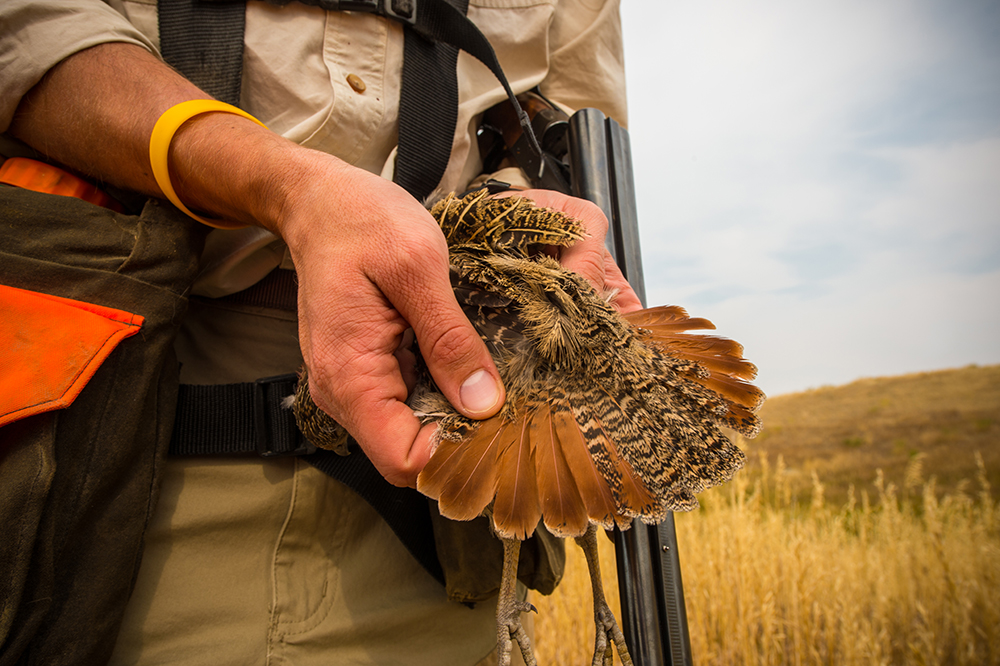
What the Future Holds
Within a few months of this article appearing in print, Pippa Perkins will be out in the spring twilight with her father Simon and her mother Els, walking the bottomland hedgerows of the Battenkill below her great-uncle Dave’s house. She’ll be listening for peenting woodcock, and the gobbles of roosted tom turkeys. She’ll walk on her own little feet this spring, feeling the mud squelch up around her rubber boots, watching as her father whistles his setters into wide casts.
Maybe she’ll see a first-year dog lock up in the puckerbrush, pointing a bird riding the winds north to its summer home. Maybe she’ll feel her mother’s hand tighten around her tiny one as the bird twitters up and dances out over the Battenkill. Maybe she’ll see her father smile at these things, as he saw his father smile at them years before. Maybe in this intimate communion something will be passed on, a sliver of something time-honored and precious. Pippa will be afforded an experience replete with pointing dogs and flushing birds and people who know these matters well, and share them humbly. Birds and dogs and days afield will unfold before her, enriched by people who love those things, and love her even more.
These are the ties that bind her tight to a family who knows what they care for, and knows how to care for it well.
























